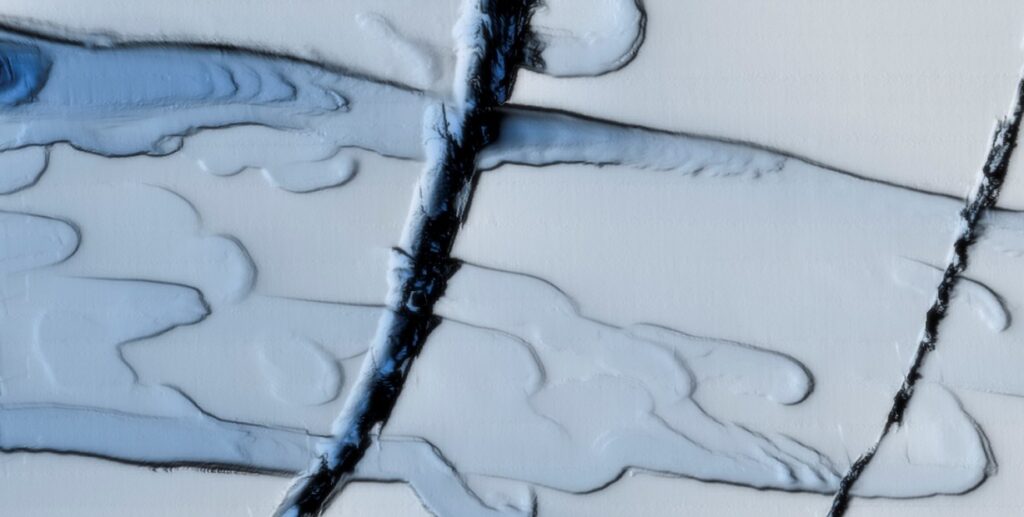
A submersible robot has found strange, unknown shapes at the base of the Antarctic ice shelf. The robot, the autonomous underwater vehicle "Ran", recently dived into the area.
The underside of glaciers remains a mystery, and now we have the first detailed maps made by this robot, specifically in West Antarctica, which reveal clues about future sea level rise.
Ran dove into the cavity of the Dotson Ice Shelf, scanning the ice above it with an advanced sonar system. Over 27 days in 2022, it traveled more than 1,000 kilometers round trip, reaching 17 kilometers into the cavity.
The results of its journey are published in a study led by the University of Gothenburg (Sweden), published in the journal Science, which documents never-before-seen shapes on the underside of an Antarctic ice shelf, shaped by the circulation of warm water.
“It’s like seeing the dark side of the Moon”
A shelf is a mass of glacial ice fed from land by tributary glaciers, which floats in the sea above a cavity in the ice shelf.
Normally, satellite data and ice cores are used to observe glacier change, but the submersible was able to obtain high-resolution maps of the underside of the ice.
“It’s a bit like seeing the far side of the Moon,” said lead author Anna Wåhlin of the University of Gothenburg.
The new data and images “may provide key missing information to improve modeled projections of ice shelf melt and sea level rise,” as well as opening up a new avenue of scientific research, the study said.
The Dotson Ice Shelf is adjacent to the Thwaites Glacier, which is thought to have a major impact on future sea level rise due to its size and location.
The glacier melts fastest where strong underwater currents erode its base, and scientists were able to measure currents beneath the glacier for the first time to show why the western part of the Dotson Ice Shelf is melting so fast.
They also see evidence of very high melting in vertical fractures that run through the glacier.
The rover also recorded data on salinity, temperature, and water currents beneath the ice shelf. The results indicate that previously unquantified basal melting mechanisms occur beneath the shelf and likely beneath others.
Unknown shapes on Antarctic ice shelf
The high-resolution maps also revealed previously unknown shapes at the base of the ice shelf, with inverted grooves between 20 and 300 meters long that only appeared at the western base of the ice shelf, which experiences the highest rates of basal melting.
“I couldn’t stop looking at it,” Wåhlin told The New York Times. “We had no idea it could look like this,” he added.
These unknown shapes create peaks and valleys of ice with plateaus and formations that resemble sand dunes. Researchers hypothesize that these could have been formed by the flow of water under the influence of the Earth’s rotation.
The team returned to Dotson’s platform this year with the Ran vehicle to repeat the studies, hoping to document the changes. The autonomous submarine was only able to make one dive before disappearing beneath the ice without a trace.
“Although we recovered valuable data, we did not get everything we had hoped for. These scientific breakthroughs were made possible by the unique submersible that was Ran. This research is necessary to understand the future of the Antarctic ice sheet and we look forward to taking over from Ran and continuing this important work,” said Wåhlin.